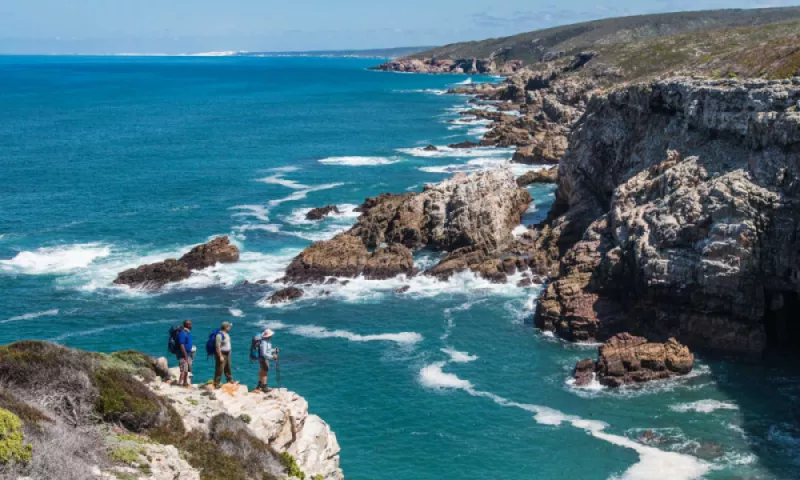In celebration of Marine Protected Area Day, celebrated annually on August 1, CapeNature and the National Research Foundation (NRF) are proud to highlight their ongoing efforts to protect marine life through the Acoustic Tracking Array Platform (ATAP) in the Western Cape’s Marine Protected Areas (MPAs).
Between June 18 and 19, a team from CapeNature, including a marine specialist and field rangers, collaborated with the South African Institute for Aquatic Biodiversity (NRF-SAIAB) to perform essential maintenance on ATAP acoustic receivers in the De Hoop MPA. The team was also joined by an ATAP marine technician and a PhD student, ensuring a smooth operation.
ATAP, funded by the Department of Science and Innovation, deploys over 250 moored acoustic receivers along 2,200 kilometres of South Africa’s coastline, from St Helena Bay in the Western Cape to Ponta do Ouro at the Mozambique border. This extensive network tracks marine animals with acoustic tags, providing invaluable data on their movements and habitat use.
CapeNature’s 6.5-metre vessel, Storm Petrel, played a pivotal role in this mission, retrieving and deploying receivers in De Hoop and adjacent sites, including the Breede estuary. The operation involved a 130-kilometre round trip from Witsand in the Breede Estuary, navigating challenging conditions with a 28-knot gusting NW wind. Despite these obstacles, the team successfully visited six receiver sites on the first day, utilising innovative acoustic release technology to retrieve and replace the devices. Unfortunately, one of the acoustic releases was not retrieved. Future recovery efforts will be made for this unit.
Clever acoustic release technology allows NRF-SAIAB researchers to release the deployed receiver at each site from its anchor using surface-based technology.
The following day, the team tackled three additional offshore sites, including the Duiwenhoks Estuary and the remaining receivers in the Breede Estuary, covering 220 kilometres over the two-day operation.
The data collected through ATAP’s network helps MPA managers understand how targeted species utilise MPAs, their migration patterns, and the significance of adjacent habitats such as bays and estuaries. This evidence is crucial for conservation efforts and the expansion of protected areas.
The successful completion of this mission underscores the value of the ongoing productive partnership between CapeNature and NRF-SAIAB in advancing marine conservation. As we celebrate MPA Day, this achievement highlights South Africa’s leadership in aquatic biodiversity research and the vital role of MPAs in protecting our marine ecosystems.

